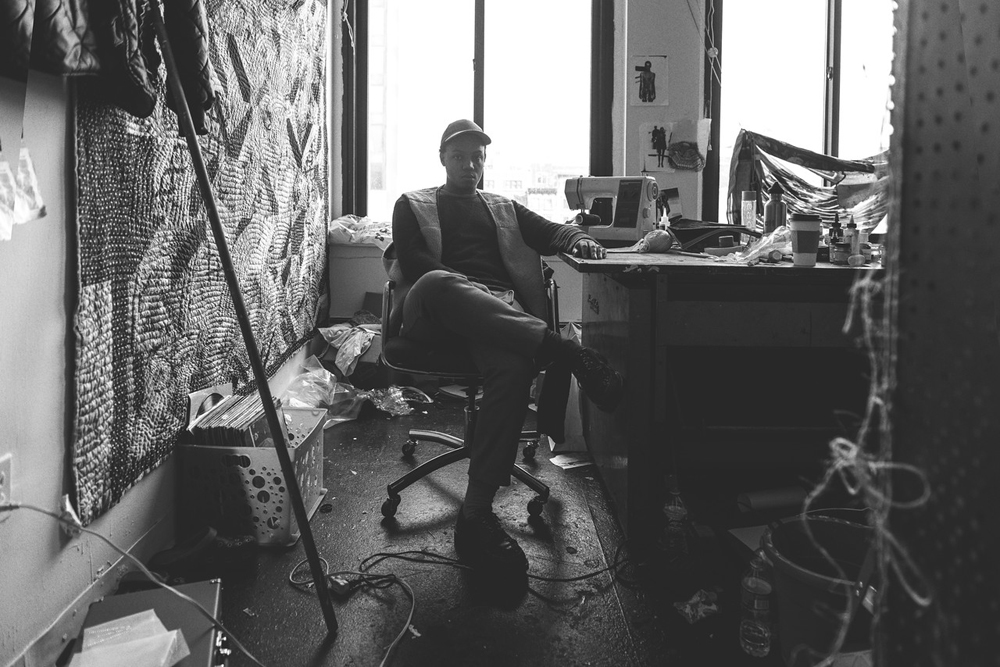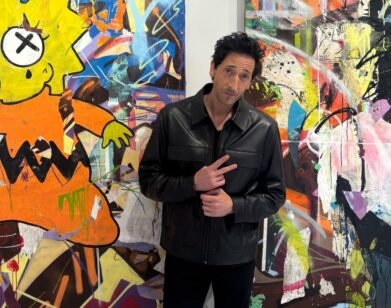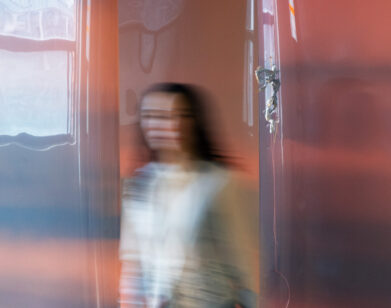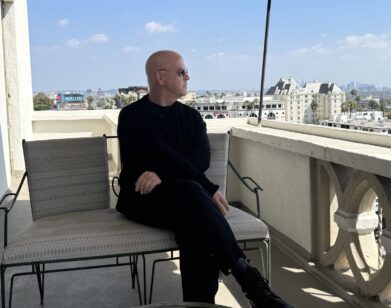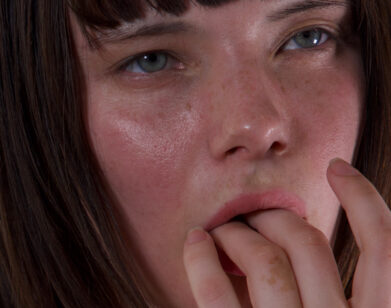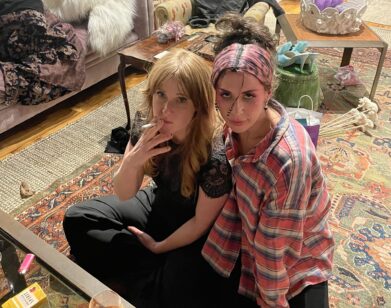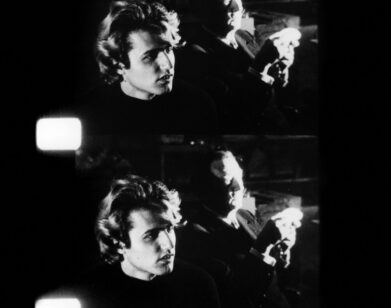Painting Outside of the Canvas
ERIC MACK IN NEW YORK, FEBRUARY 2015. PORTRAITS BY CHRISTOPHER GABELLO.
In 2012, artist Eric Mack displayed his work Honey Hollow during “Fore” (part of The Studio Museum in Harlem’s ongoing exhibition series of emerging African American talent), challenging the idea that painting must be represented in a traditional, rectangular format. Mack’s “painting,” which was actually a blanket painted purple, hung from a wall and swayed in the breeze created by a metal fan sitting on the ground. Honey Hollow foreshadowed many works to come, all of which encompass the conceptual and performative subjectivity of ideas presented by the Maryland-born, New York-based artist.
This past Sunday, Mack’s most recent work went on view alongside works by Brian Belott and Noam Rappaport at OHWOW in Los Angeles as part of the group show “Some Stew You Got Inside Your Plastic Bag, and You Always Organize The Parts So Close.” Continuing his desire to expand, or perhaps nullify, the boundaries of traditional painting formats, Mack stitched together found, bought, and personal fabrics, frequently adding layers of paint, magazine images, and paper. The 27-year-old artist, who is now completing a residency at The Studio Museum, hangs his works throughout the gallery in a way that forces the audience to come face-to-face with and physically maneuver their way around. With his work Claudine, fabric hangs from a curtain rod, exposing the material’s movement, allowing for a temporal understanding between viewer and object.
“It is alienating,” the Cooper Union and recent Yale MFA program graduate says about the limiting nature of paintings on canvas. “There is a removal from considering painting as an object, which was a big challenge for me early on. I thought, ‘If painting is an object, then how does it speak?’ I’m trying to get people to feel a closeness to painting.”
Prior to the opening of his show in L.A., we caught up with the artist at his studio in New York.
ANTWAUN SARGENT: What’s the inspiration behind the work you are showing at OHWOW?
ERIC MACK: I think a lot about abstraction and how to translate that from everyday experience. The way that I deal with that is by thinking about the idea of the fragment in everyday space, so a lot of my work has to be thinking about everyday experiences and what I want to transpose into paint.
SARGENT: What everyday experience inspired this body of work?
MACK: I would say the work has to do with a particular type of tactility. It’s more about dealing with things from the everyday. In the piece Rare Essence, I use a store bought picnic blanket, it’s plaid, and I use a pegboard to push paint through so that these little dots appear on the picnic blanket, and I showed an Islamic rug I found at a secondhand shop that has a really bright, rich blue that feels like it’s absorbed in the material. That ends up being intertwined with this moving blanket and being really lyrical in its composition. Having all these fabrics pieced together creates this gesture that allow them to speak at once.
SARGENT: How do you go about balancing the individual narratives of the fabrics used in your paintings?
MACK: It is important that it’s a combination of fabrics because if it is out of balance the store bought fabric could end up speaking too loudly, or the personal fabric could overcome some of the narrative. I always go back to the patchwork quilt because it represents a visual language that speaks through materials, color, and texture. There’s a really strong history of that in relation to black southern culture and I think about that when I am placing these blankets on the wall.
SARGENT: The way that your work is installed is pretty performative. What is the significance of hanging the work the way you do?
MACK: I’m trying to conjure up particular frameworks. I think a lot about rearranging paintings so that the emphasis isn’t so much on the historical significance of the rectangle, but on one that would allow the surface to move or perform. The curtain rod [in Claudine] allows the painting to hang and be part of the everyday language people can understand.
SARGENT: In terms of space activation and establishing a closeness between the work and the viewer, how do you decide to hang pieces like Claudine versus Rare Essence?
MACK: It has to do with what the piece allow. The piece Claudine is quite light so it can be hung, which allows me to maximize the weightlessness I was trying to communicate. There are a lot of different material shifts on the surface of the work, so hanging it from the rod allows it to have its own space for contemplation.
SARGENT: You also stitch in popular fashion references in the work. What role does fashion play in the creation of the fabric collages?
MACK: Right now, fashion is a huge part of the relationship to the fabric collages. I think it can be a point of reference for the viewer. In thinking about the materials and experiences with the fabric that the viewer has possibly had before, I like the seductive identity of those fabrics. There is also a point of relativeness between, say, someone wearing a silk shirt and my work that uses silk that I feel is a point of intimacy between the viewer and the artwork itself. I went to see some fashion shows this season.
SARGENT: What shows did you see?
MACK: I saw Eckhaus Latta and Telfar.
SARGENT: Your work One Dickie Denim is in conversation with Telfar’s latest collection. You deconstructed the jeans and stitched them back together much in the same way that Telfar has used denim to imagine other possibilities beyond the traditional way denim is worn.
MACK: I think I was trying to speak simultaneously. Most of the gestures I make in my work have to say four different things to be good. Reconstructing the denim in that manner was my way of organizing it and acknowledging it as a visual point of communication. I think I wore those jeans and got paint on them and then used that paint splatter as a gesture when I made the work.
SARGENT: You talked about making your subjectivity known in the paintings. What parts of yourself do you think you are most revealing in your work?
MACK: Early on, I was really worried about identity being far more dynamic than it’s being presented. I think about myself in relationship to my points of selection. I think blackness is way more complicated than has been explored.
“SOME STEW YOU GOT INSIDE YOUR PLASTIC BAG, AND YOU ALAYS ORGANIZE THE PARTS SO CLOSE” IS ON VIEW AT OHWOW GALLERY IN LOS ANGELES NOW THROUGH MARCH 28.

